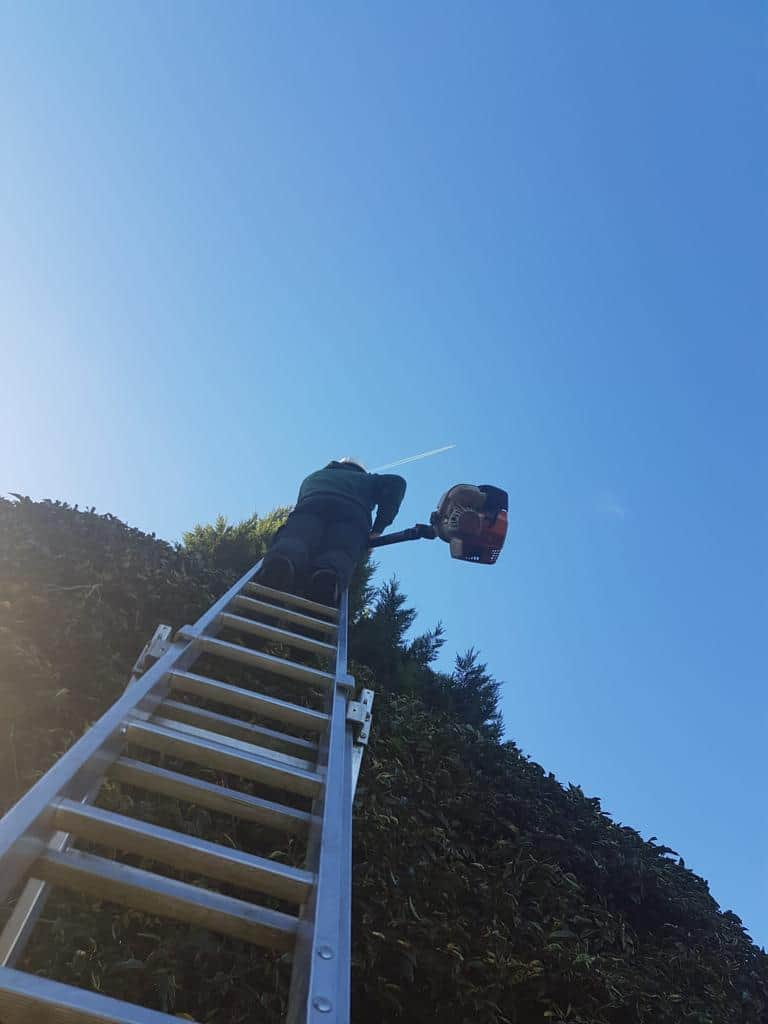Trees are an invaluable part of any landscape, offering shade, aesthetic appeal, and environmental benefits. However, just like any living organism, trees need care and attention to ensure their health and safety. One essential tree maintenance service is crown reduction, which involves selectively reducing the size of a tree’s canopy while preserving its natural shape. This process not only enhances the tree’s aesthetic appeal but also promotes its overall health and safety. In this article, we will explore the benefits of crown reduction and why it’s an important service for maintaining both the beauty and safety of your trees.
What is Crown Reduction?
Crown reduction is a professional tree care technique that involves reducing the size of the canopy or crown of a tree. Unlike tree topping, which can cause significant damage, crown reduction maintains the tree’s natural structure by cutting back the branches to a point where the tree can continue to grow healthily. This process helps to control the tree’s size, balance the canopy, and prevent potential hazards associated with overgrowth, such as broken branches or interference with structures.
The primary goal of crown reduction is to reduce the tree’s height and spread while ensuring the tree remains in good health. It is a highly skilled technique that requires expert knowledge of tree biology and pruning methods to achieve the best result.
When is Crown Reduction Necessary?
Crown reduction is a versatile service that can be beneficial in a range of situations. Here are a few key scenarios where crown reduction may be necessary:
1. Overgrown Trees Near Structures
Overgrown trees can pose a significant risk to nearby structures, such as houses, fences, power lines, and roads. If tree branches are getting too close to your property or utility lines, crown reduction can help trim back the overgrowth and prevent any potential damage. This is particularly important for trees that have outgrown their designated space, as uncontrolled growth can lead to broken branches or even a tree falling.
2. Healthier Growth and Tree Shaping
Trees that are poorly shaped or unbalanced can benefit from crown reduction to promote healthier growth. By selectively thinning and reducing the canopy, you can remove weak or overcrowded branches, allowing the tree to receive more sunlight and air circulation. This encourages strong and healthy new growth while enhancing the tree’s overall appearance. Proper shaping can also help maintain the natural beauty of the tree and allow it to better fit within its landscape.
3. Improving Safety
Safety is a key concern when it comes to trees in both residential and commercial environments. Overgrown or poorly maintained trees can pose risks to people and property. Heavy branches can break off in strong winds, potentially causing injuries or damage to structures. Crown reduction helps mitigate this risk by removing dead or dangerous branches that could fall unexpectedly.
4. Regulating Tree Size
Some trees may become too large for their surroundings over time. In these cases, crown reduction can help control their size, making them more manageable and safe. Whether it’s reducing the spread of branches or cutting back a tree’s height, crown reduction helps keep trees in proportion to their environment.
The Benefits of Crown Reduction
1. Enhances Tree Health
By reducing the tree’s canopy, crown reduction ensures that the remaining branches and foliage receive optimal sunlight and nutrients. This helps improve the tree’s overall health, making it more resilient against pests, diseases, and environmental stressors. It can also prevent root damage and improve the tree’s structural integrity.
2. Promotes Better Aesthetics
Crown reduction allows trees to maintain their natural form while controlling their size. A well-pruned tree looks more aesthetically pleasing and symmetrical, which can enhance the overall appearance of your landscape. Proper tree shaping through crown reduction is a highly effective way to keep your garden looking tidy and well-maintained.
3. Prevents Damage to Property
By trimming back branches that may be encroaching on your property or nearby structures, crown reduction helps prevent potential damage to buildings, fences, roofs, and power lines. This can save you from costly repairs and ensure the safety of your property.
4. Increases Safety
Removing dangerous branches or excess growth reduces the risk of limbs falling and causing injury to people or damage to property. Crown reduction is a proactive approach to ensuring that your trees do not become a safety hazard, especially in stormy or windy conditions.
The Crown Reduction Process
Crown reduction should only be carried out by a qualified and experienced tree surgeon to ensure that the tree remains healthy and safe throughout the process. The tree surgeon will carefully evaluate the tree’s size, shape, and condition, making strategic cuts to reduce the canopy. The goal is to remove a portion of the tree without damaging its structure or health, which requires expertise in pruning techniques.
Conclusion
Crown reduction is an essential tree care service that helps keep your trees healthy, safe, and aesthetically pleasing. Whether you need to control the size of a tree, improve its appearance, or protect your property from potential damage, crown reduction offers a highly effective solution.
At Fulbourn Tree Surgeons, we specialise in providing professional crown reduction services to enhance the beauty and safety of your trees. If you’re concerned about overgrown trees or want to ensure the health of your garden’s trees, contact us today to schedule an assessment. Let our expert tree surgeons help you keep your trees in top condition for years to come.
Call us on: 01223 912 391
Click here to find out more about Fulbourn Tree Surgeons
Click here to complete our contact form and see how we can help with your tree care needs.

